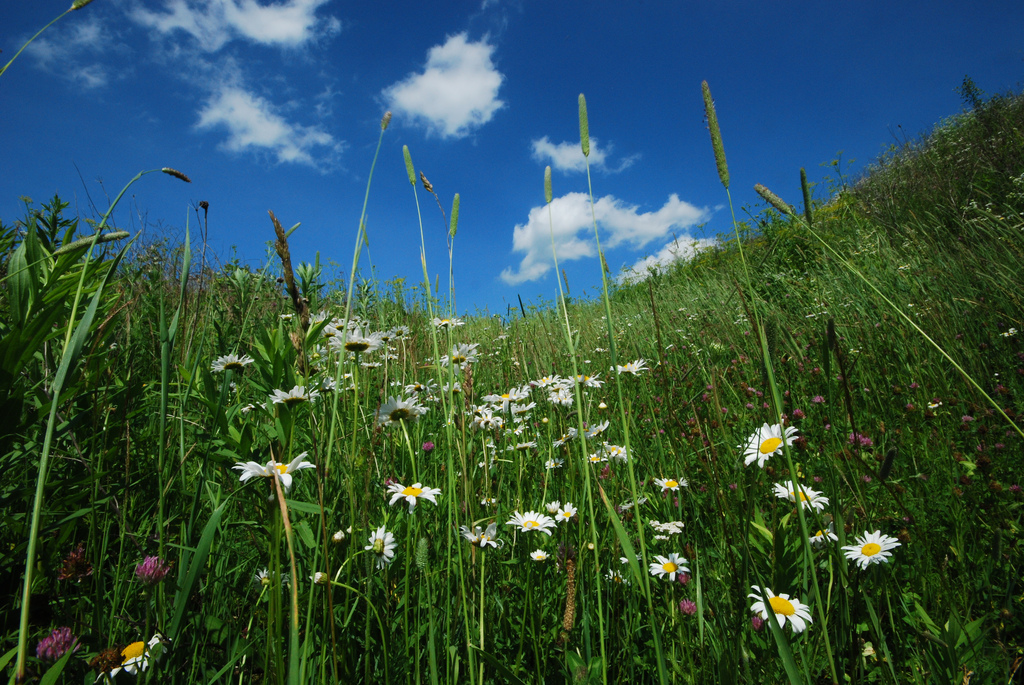This post is part of an ongoing series highlighting the impacts of the Knowles-Nelson Stewardship Program. The Stewardship Program provides funds for cities, counties, non-profit groups, and the state to purchase land for conservation. It also funds essential upkeep and maintenance of our waterways, parks, forests, and trail systems. The governor and state legislature must act to renew and strengthen the Knowles-Nelson Stewardship Program in their 2019 budget or it will expire. Contact your legislators today, let them know how important the Knowles-Nelson Stewardship Program is to you, and be part of the movement to ensure continued funding for land and water conservation in Wisconsin.
The Tunnelville Cliffs State Natural Area is part of 2,278 acres of land that the Mississippi Valley Conservancy has protected along the banks of the winding Kickapoo River near La Farge in Vernon County. The property is open to the public for hunting, hiking, birding, and other recreational activities. The Mississippi Valley Conservancy also hosts field trips to properties they have helped to protect. Grants from the Knowles-Nelson Stewardship Program help make it possible to steward Tunnelville Cliffs.
Many thanks to Margaret Lee for writing this post.
Jack and I discovered the Kickapoo Valley in 1968. A small article in the Milwaukee Journal Sentinel told of a canoe rental service started by Bernard Smith. We were then living just north of Elkhorn in Walworth County. The Kickapoo River sounded like a great place to have a canoe weekend.
What we found when we arrived was Bernard, six canoes on a converted snowmobile trailer, and our future farm. We canoed that weekend, and over the next eight years Bernard let us camp, hike, and eventually bring our horses to ride on his farm.
In 1976 we left busy, noisy Walworth County to purchase Bernard and Jeanne Smith’s farm and canoe rental company. We had come to love the peace and quiet of this beautiful place. We brought our children, who ranged from 13 to 17 years old, along with their various 4-H projects: horses, goats, sheep, a cow, chickens, ducks, geese.
The farm was a thing of beauty. Limestone bluffs drop into the Kickapoo River on the nearly mile-long stretch of river that runs along the farm; pines like sentinels cover the peaks of those bluffs. Springs run from the hills, forming streams as they tumble on their way to the Kickapoo. In the winter, ice caves form where water drips over the rock outcroppings. At the top of the rocky ridge that runs through the middle of the farm, an emerald mountain appears as the snow melts, revealing that the rocks are covered with deep green mosses.
As we have continued to explore, we have found more and more that amazes us. We climbed one of the tallest hills on this farm, and on the other side we found a whole different ecosystem: west-facing dry prairie with oak savannas and many of the grasses that are native to this area.
In the wetlands there is early skunk cabbage, and later, marsh marigold. The valleys behind the bluffs are covered with spring beauties, hepatica, purple lavender, white and yellow violets, and others that I can’t name. There are ferns and mosses growing under the forest of birch, sugar maple, poplar and butternut. And I must not forget the Northern Monkshood plantation, watched over by several naturalists who have visited our farm with regularity.
To list the birds is like listing the trees or wildflowers—too many to count! There are warblers, orioles, finches, woodpeckers of many varieties including pileated, cardinals, grosbeaks, owls, hawks, eagles, cranes, ducks. Butterflies are here too, yellow ones, orange, black, white, and blue feeding on the flowers and milkweed.
Before long the canoe rental had grown to 55 canoes. We remodeled the barn and purchased a small herd of Jerseys, who enjoyed grazing the wooded hillsides too steep for cropping. Our children grew up and left to follow their own dreams. Left without their help, we sold the canoe rental company in 1990 and put our energy into the dairy farm.
The property still never ceases to amaze us. But Jack and I had turned 70, and it was time to retire. We knew our future wellbeing lay in the value of our land. What should we do?
Thanks to Darcy Kind, one of the naturalists who spent time hiking on the farm and learned to love the property, too, we learned about Mississippi Valley Conservancy.
Their program to purchase unique properties for conservation fit our farm. The farm is organic but really too steep for much farming. Breaking it into parcels for sale was not a happy option. It was Darcy who suggested we might sell to the Conservancy.
It’s the best of all worlds! The land is here for us and our grandchildren—and for you and your grandchildren too!





